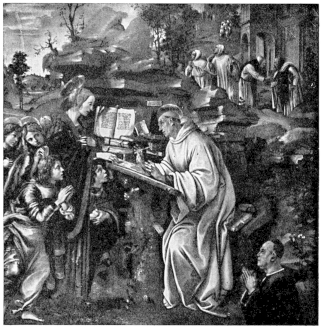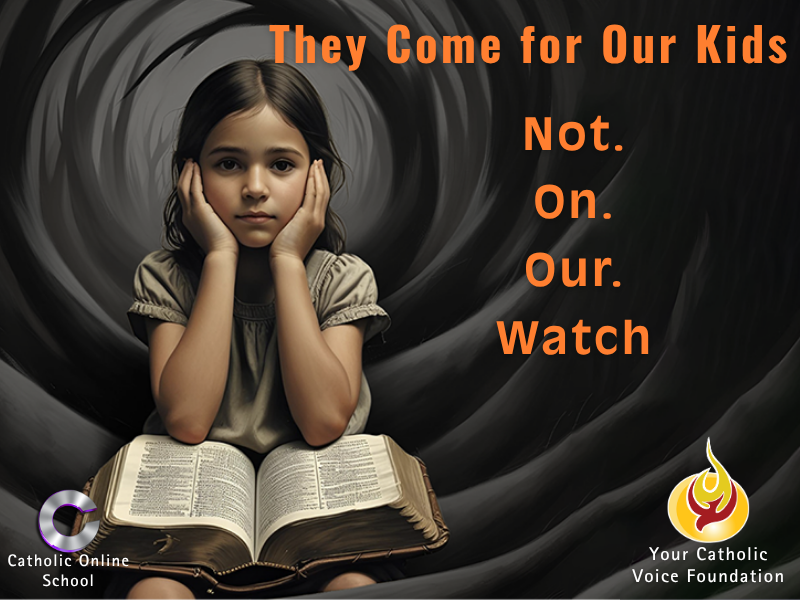We ask you, urgently: don't scroll past this
Dear readers, Catholic Online was de-platformed by Shopify for our pro-life beliefs. They shut down our Catholic Online, Catholic Online School, Prayer Candles, and Catholic Online Learning Resources essential faith tools serving over 1.4 million students and millions of families worldwide. Our founders, now in their 70's, just gave their entire life savings to protect this mission. But fewer than 2% of readers donate. If everyone gave just $5, the cost of a coffee, we could rebuild stronger and keep Catholic education free for all. Stand with us in faith. Thank you.Help Now >
Salamanca
FREE Catholic Classes
(SALMANTICENSIS, SALMANTINA, SALMANTICAE).
Diocese in Spain ; comprises the civil Provinces of Salamanca, Cáceres, Avila, and Léon, and is bounded on the north by Zamora, on the east by Avila and Valladolic, on the south by Cáceres, and on the west by Portugal. The episcopal city has a population of 23,000. Its territory formed the southern portion of the ancient Vetonia, and the existence of the city of Salamanca in the Roman period is evidenced by a pretentious bridge over the River Tornes, with twenty-seven arches, measuring 500 paces in length, and probably erected in the time of Trajan.
The See of Salamanca is of unknown origin, probably dating back to the generation immediately after the Apostles, in which generation St. Secundus is said to have founded the Diocese of Avila . Signatures of bishops of Salamanca are found in the Councils of Toledo; in the third council is that of Eleutherius; at the coronation of King Gondemar, that of Teveristus; in the fourth and sixth of Hiccila; in the seventh, eighth and tenth, of Egeretus; in the Provincial Council of Mérida (metropolis of Salamanca) the signature of Justus;in the twelfth of Toledo that of Providentius; in the thirteenth, fifteenth, and sixteenth, of Holemund, probably contemporaneous with the Moslem invasion. Alfonso I the Catholic pushed his conquests as far as Salamanca, and Ordoño I captured the city, but its bishops continued to reside in Asturias, where the Church of San Julian, outside the walls of Oviedo, was assigned to them. Bishop Quindulfus (802) signed a royal deed of gift. Ramiro II, who defeated the Mohammedans at Simancas, began to repeople Saamanca. In 1102 the king's son-in-law Raymond, Count of Burgundy, and his wife Urraca, gave the churces of the city to Don Jerónimo, the count's master, and built the Cathedral of S. María. The celebrated bishop, comrade of the Cid Campeador, died in 1120 and was interred in the newly-built basilica, to which he left the famous "Christ of the Battles" (Cristo de las Batallas).
Later bishops were: Gerardo; Munio, a partisan of Alfonso of Aragón: Berengario, consecrated in 1135 and transferred to Compostela in 1151; Navarro; Ordoño Gonzálo; Pedro Suárez, praised by Alexander III for learning and prudence ; and Vitalis, who maintained he validity of Alfoonso IX's marriage with his cousin Teresa of Portugal against the censures of Celetine III and the sentence of the bishops presided over by Cardinal Guillermo in 1197. From his period date the university and the most ancient and famous convents of Dominicans, Franciscans, and Clarisses. In October, 1310, the see being vacant, fifteen prelates of the ancient Province of Lusitania, presided over by the Archbishop of Santiago, assembled in the cathedral of Salamanca to try the case of Templars, and found them innocent in Spain of all the atrocities with which they were charged. Bishop Juan Lucero accompanied King Alfonso XI to the conquest of Algeciras. Later on he became subservient to the caprices of Pedro I the Cruel and annulled (1354) his marriage with Blanche of Bourbon in order to unite him with Juana de Castro. Lucero's successor, Alsonso Barrasa, on the conrary, supported Henry of Trastamare against Pedro. In May, 1382, a council was held at Salamanca to take action in the matter of the schism of Avignon, and Castile decided in favour of the antipope. In another council (1410) Salamanca again recognized Peter de Luna (Benedict XIII) as pope. At this time Vincent Ferrer laboured to convert the Jews of Saamanca; from 1460 to 1478 St. John of Sahagún enlightened the diocese of his preaching.
Salamanca has two cathedrals ; the old, celebrated for its massive strength, was foundned in 1100 by the aforesaid Count Raymond near the River Gate (Puerta del Rio). At the end of the thirteenth century it was not yet finished, and its man entrance, called Del Perdón (of the Pardon), was covered over in 1680 with new Doric and Composite pilasters. In 1847 it was freed of its inartistic choir. Its building occupied so long a time that Gothic ogival arches are supported by its Byzantine foundations. Of its three naves the principal one terminates in the main chapel on the reredos of which is to be seen the "Last Judgment" painting of Nicolás Florentino in 1446 for Bisop Sancho of Castile. In early days none but royal personnages wee permitted to be buried in this main chapel ; here lie Mafalda, daughter of Alfonso VIII, Fernando Alfonso, natural son of Alfonso IX of León, Bishop Sancho of Castile, Grandson of Pedro, and his successor, Juan de Vivero. The cloisster of the old cathedral was Romanesque, but in 1780 Jerónimo Quiñones rebuilt it in Renaissance style. Most remarkable of ts four chapels, is that of St. Bartholomew, founded by Diego de Anaya, Bishop of Salamanca until 1480, and then Archbishop of Seville, and founder of the famous Colegio de San Bartolomé. There are also the chapels of Talavera, which was consecrated to the Mozarabic Rite in 1510 and in which Rodrigo Arias Maldonado de Talavera is buried, and that of St. Barbara, founded in 1384 by Bishop Juan Lucero.
The new cathedral was founded by the Catholic monarchs, who in 1491 sought to build one in Seville, but the idea was not carried into effect until 1508, when Fernando was at Salamanca. This new edifice was erected side by side with the old, leaving the latter intact. Its architects, Antón Egas and Alfonso Rodríguez, had built churches at Toledo and Seville; Juan Gil de Hontañon was master of works. The buildng was begun in 1560, and it was completed in 10 August, 1733. The tower, set on fire by lightning in 1705, was rebuilt by the celebrated José Churriguera, who made it a monument of the style (Churrigueresque) to which he gave his name. In the chapel at the centre of the rood screen are remains of Bishop Jerónimo, transferred from the old basilica in 1744, and the venerated "Christ of the Battles". In two large silver vessels within the high altar, the relics of St. John of Sahagún and St. Thomas of Villanova are preserved. Besides the cathedrals, a sumptuous church worthy of especial mention is that of the Dominican convent of San Esteban, occupied by the Dominicans since 1256, where, it is said, Christopoher Columbus was entertained in 1484 and where he found Fray Diego de Deza one of his most ardent protectors. The church was rebuilt in the sixteenth century, the first stone was laid on 30 June, 1524, and the work was completed in 1610. The founder of this convent was the Salamancan Fray Juan de Toledo, of the House of Alva, Bishop of Cordoba, and cardinal ; here, too, is buried the famous Duke of Alva with his wife María Enriquez de Toledo. Another beautiful church is that of the Jesuits, founded by King Philip III and his consort Margaret of Austria in 1614. The college was converted into an ecclesiastical seminary by Bishop Beltrán in 1779, was made a pontifical university, and is now under the care of the Jesuits. In former times there were numberous hospitals at Salamanca, but in 1851 it was agreed to combine them all into one, under the care of the Brothers of St. John of God , and dedicated to the Trininty. The library of the university and province, containing more than 100,000 volumes is a remarkable one.
Join the Movement
When you sign up below, you don't just join an email list - you're joining an entire movement for Free world class Catholic education.
-

- Easter / Lent
- Ascension Day
- 7 Morning Prayers
- Mysteries of the Rosary
- Litany of the Bl. Virgin Mary
- Popular Saints
- Popular Prayers
- Female Saints
- Saint Feast Days by Month
- Stations of the Cross
- St. Francis of Assisi
- St. Michael the Archangel
- The Apostles' Creed
- Unfailing Prayer to St. Anthony
- Pray the Rosary
Pope Leo XIV Visits Historic Shrine of Our Lady of Grace
North Korea Pushes AI-Based Combat Systems
Adult Conversions to Catholicism Reach 20-Year High in the United States
Daily Catholic
 Daily Readings for Wednesday, August 20, 2025
Daily Readings for Wednesday, August 20, 2025 St. Bernard of Clairvaux: Saint of the Day for Wednesday, August 20, 2025
St. Bernard of Clairvaux: Saint of the Day for Wednesday, August 20, 2025 Soul of Christ: Prayer of the Day for Wednesday, August 20, 2025
Soul of Christ: Prayer of the Day for Wednesday, August 20, 2025 Daily Readings for Tuesday, August 19, 2025
Daily Readings for Tuesday, August 19, 2025 St. John Eudes: Saint of the Day for Tuesday, August 19, 2025
St. John Eudes: Saint of the Day for Tuesday, August 19, 2025- A Spirit to Know You: Prayer of the Day for Tuesday, August 19, 2025
![]()
Copyright 2025 Catholic Online. All materials contained on this site, whether written, audible or visual are the exclusive property of Catholic Online and are protected under U.S. and International copyright laws, © Copyright 2025 Catholic Online. Any unauthorized use, without prior written consent of Catholic Online is strictly forbidden and prohibited.
Catholic Online is a Project of Your Catholic Voice Foundation, a Not-for-Profit Corporation. Your Catholic Voice Foundation has been granted a recognition of tax exemption under Section 501(c)(3) of the Internal Revenue Code. Federal Tax Identification Number: 81-0596847. Your gift is tax-deductible as allowed by law.



 Daily Readings for Wednesday, August 20, 2025
Daily Readings for Wednesday, August 20, 2025 St. Bernard of Clairvaux: Saint of the Day for Wednesday, August 20, 2025
St. Bernard of Clairvaux: Saint of the Day for Wednesday, August 20, 2025 Soul of Christ: Prayer of the Day for Wednesday, August 20, 2025
Soul of Christ: Prayer of the Day for Wednesday, August 20, 2025 St. John Eudes: Saint of the Day for Tuesday, August 19, 2025
St. John Eudes: Saint of the Day for Tuesday, August 19, 2025


